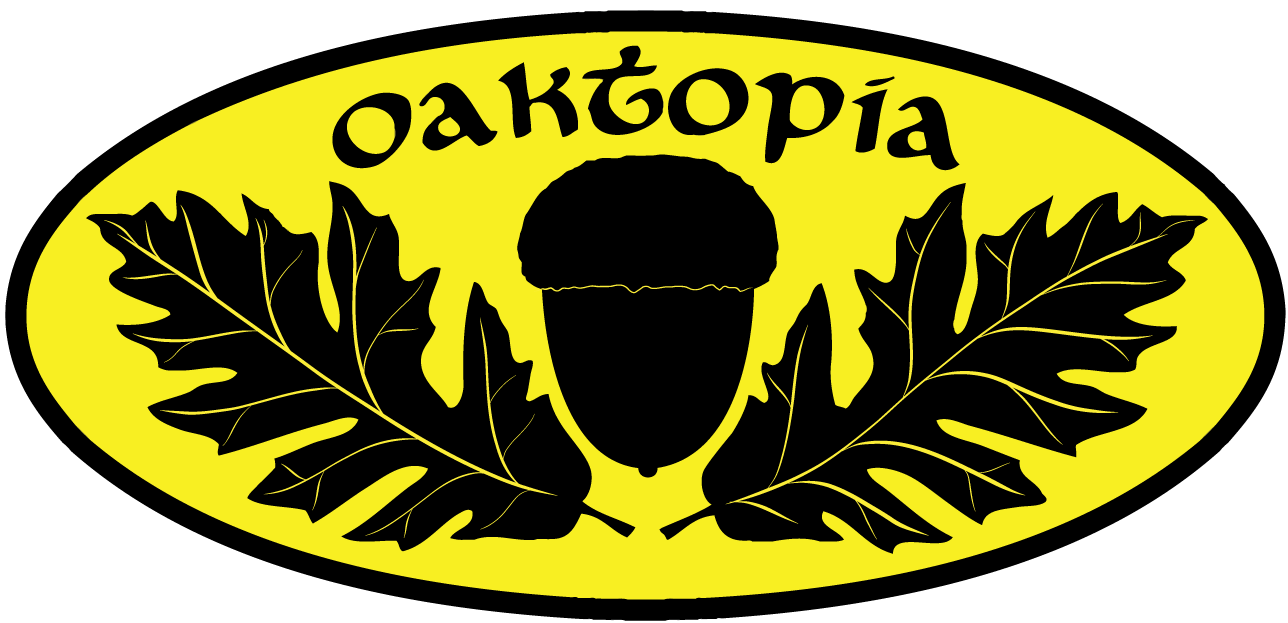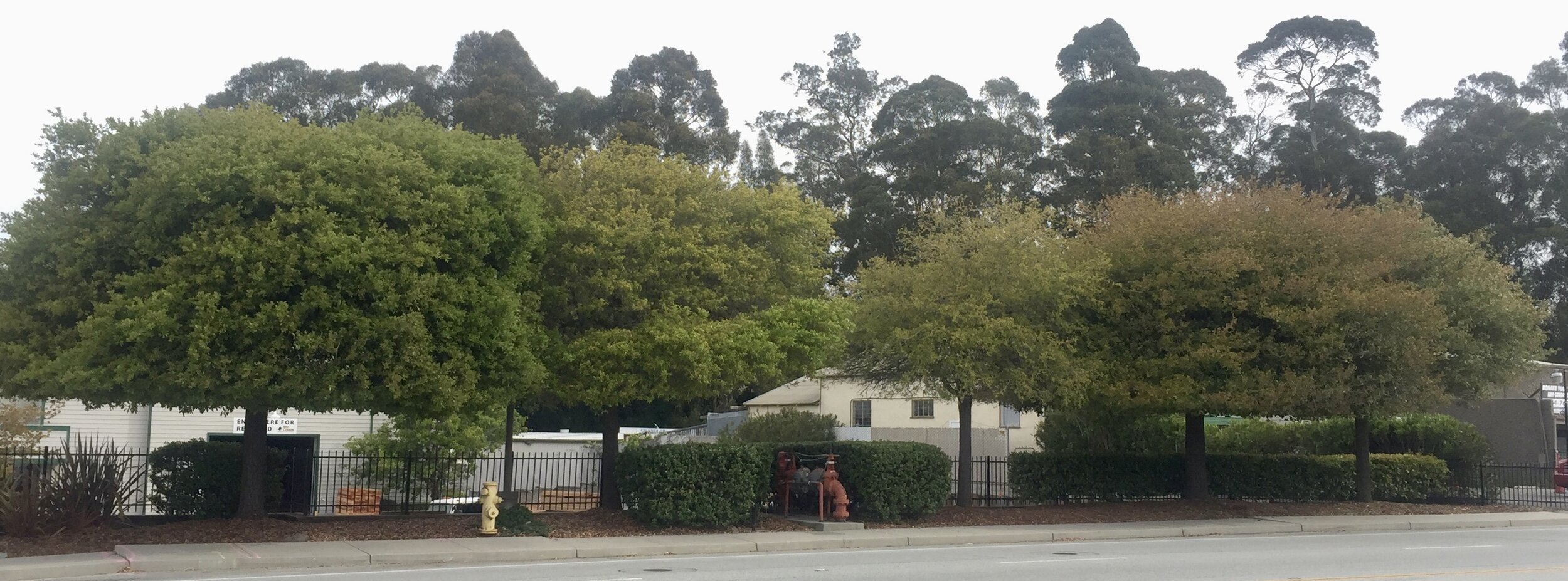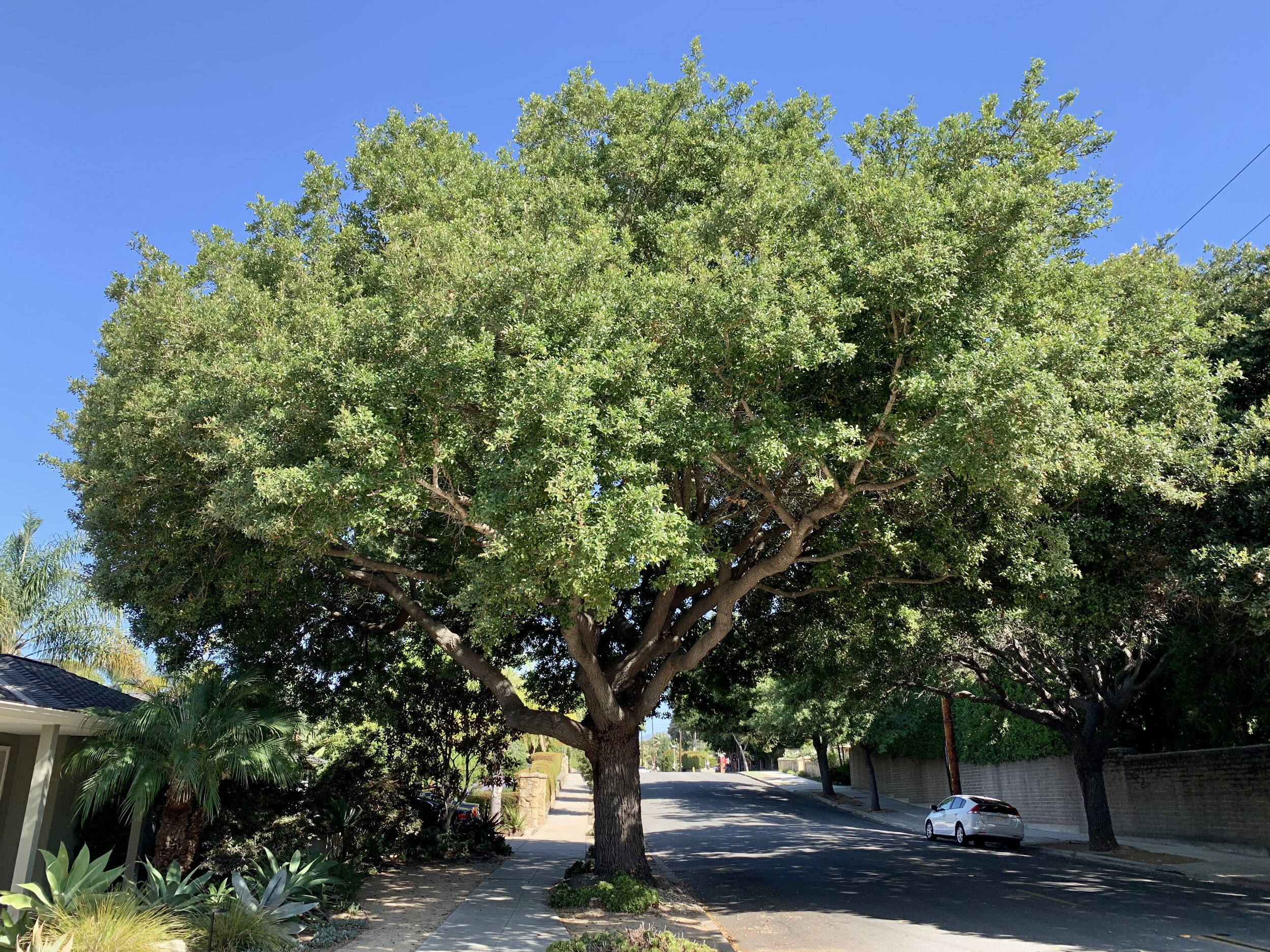Southern Live Oak
Quercus virginiana
The Southern live oak holds a unique, if now controversial, place in American history. Images of long allees of Southern live oaks lining the entry roads to plantations bespeak a history of grandeur and exploitation. The trees themselves are mute to human activities, and fight their own battles against a hostile environment.
Southern live oaks have evolved to stand strong against heavy rainfall, hurricane winds, along with relentless heat and humidity. When hurricane Katrina struck New Orleans in 2005, the two most common oak trees in the city were Southern live oak and water oak (Quercus nigra). The high winds of Katrina were a true test of the strength of the trees. The water oaks were blown to pieces, while the Southern live oaks stood fast with minimal damage.
Water oak is a fast-growing, notoriously weedy species prone to weak structure and limb drop. On the other hand, the Southern live oak is relatively slow growing, allowing the tree time to "invest" in
strong branch unions which can withstand tremendous pressures. So strong are the branch unions of Southern live oak that, in the days of wooden ships, before the advent of modern ironclad and steel warships, Southern live oak trees were harvested expressly for their branch unions. These unions were judged the strongest of any tree available in the United States, and were used to create the vital joints and corners which connected the long timbers that make up the bulk of a wooden ship.
This strength has also made Southern live oak an exceedingly common sight in cities and towns within the native geographical range of the tree. The structural strength and biological resilience of Southern live oak, combined with a dense, shady canopy, has made the tree a premier choice for urban planting in the American South, to the point of over-reliance. (To rely on a single tree species is a dangerous choice from a long term urban forest management perspective).
Another positive urban trait of Southern live oak is that although it is a very wide-spreading tree species, its inherent branch strength tends to hold branches strongly up over time with minimal drooping after clearance pruning. Simply put, the tree holds pruning clearances well, which is a key trait to minimize long term urban tree maintenance. Trees with high pruning needs become a huge financial burden to cities for long-lived tree species.
Southern live oak has been planted in small numbers throughout coastal California for at least a century, and probably longer. A trio of Southern live oaks at Stanford University appear to have been planted as part of the Stanford Arboretum, which was installed between 1880 and 1900.
When first observed in the early 2000's, the trio of trees were alive, but appeared to have been without irrigation for a least decades, and perhaps more than a century. But they were definitely alive, if a bit battered. Then, around 2010, Stanford redeveloped the area where the trees grow, and added irrigation. The trio responded well to the irrigation, and are now fine looking old trees, as shown, apparently with many years ahead of them.
The real surprise here is that the trio withstood several punishing multi-year California droughts, a sign of a truly resilient tree species. Triangulating from the Stanford trio to many other old Southern live oaks scattered around coastal California suggests that the tree is actually a low water need tree, which comes as a surprise looking simply at the rainfall of their native environment, and directly contradicts many readily available tree resources.
Southern live oak has a key biological trait which helps give the tree both its notable resistance to drought, and also resistance to fungal infection. Powdery mildew is a common disease on many plants, including certain oaks both native and introduced in areas of marine influence in coastal California. This trait is a thick, semi-transparent waxy cuticle which acts both to keep airborne spores off vulnerable inner leaf surfaces, while helping retard transpiration during times of high temperature, thus keeping as much water in the leaf as possible to resist wilting and subsequent burning.



















